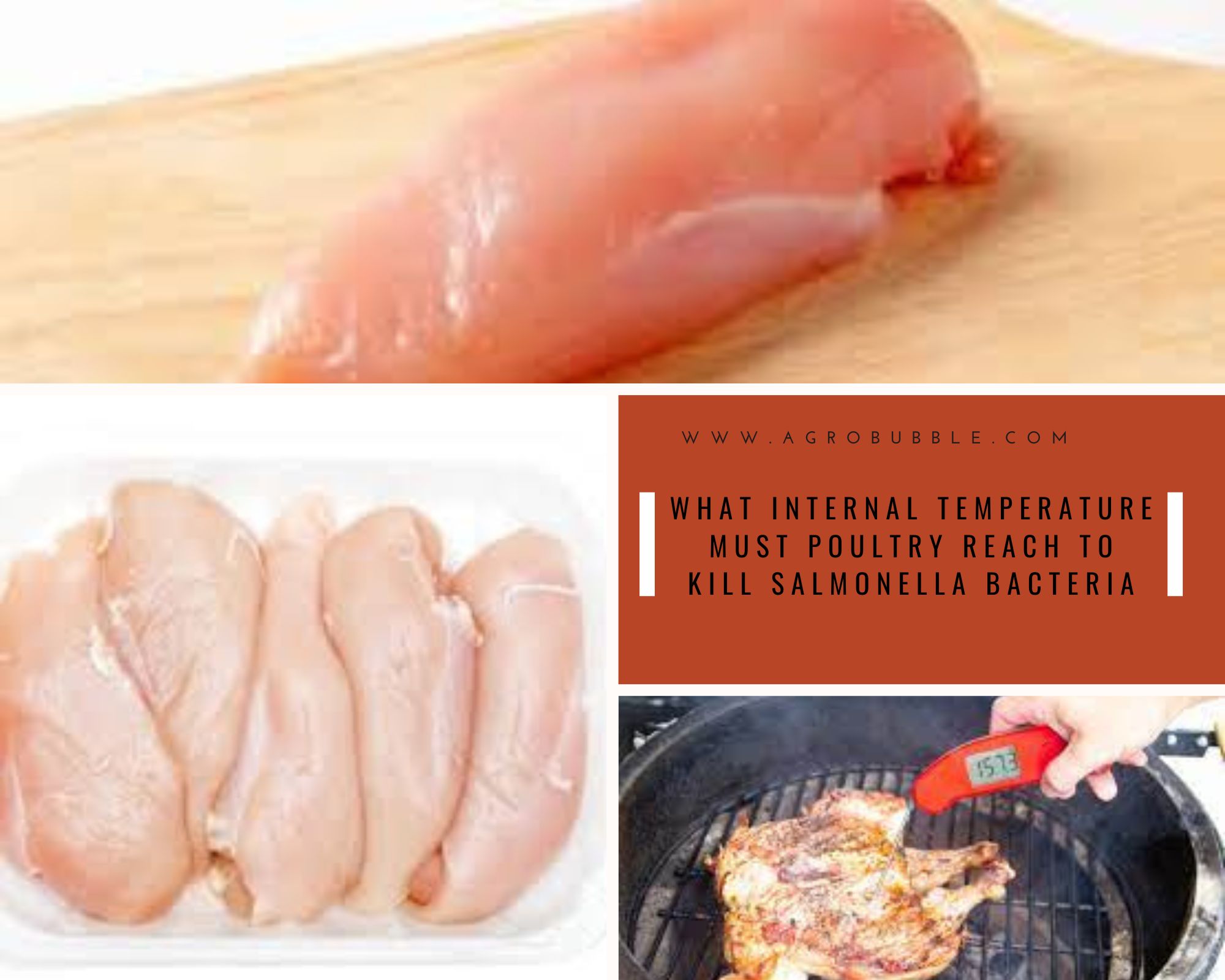Agriculture
Exploring Internal Temperatures Necessary to Eliminate Salmonella Bacteria in Poultry.

What internal temperature must poultry reach to kill Salmonella Bacteria

In the realm of food safety, few concerns loom larger than the risk of Salmonella contamination. Particularly concerning poultry, the potential for this harmful bacterium to take residence can be a serious threat to human health. As we embark on a comprehensive journey into the depths of this topic, we will unravel the mystery surrounding the internal temperatures that poultry must attain in order to decisively obliterate the lurking danger of Salmonella bacteria.
The Crucial Role of Proper Cooking Temperatures
Ensuring the safe consumption of poultry entails much more than a mere culinary pursuit; it’s a matter of safeguarding human well-being. One of the primary defenses against Salmonella infection lies in the meticulous cooking of poultry to the right internal temperature. We understand that, though this might sound elementary, achieving this feat involves a harmonious blend of precision, knowledge, and vigilance.
The Science Behind the Magic Numbers
To dive into the specifics, let’s break down the internal temperature thresholds that poultry varieties need to reach to eradicate Salmonella bacteria.
Chicken and Turkey
For chicken and turkey, two of the most popular poultry choices, the magic number is 165°F (73.9°C). At this internal temperature, the proteins within the meat denature, rendering the bacteria inactive and ensuring a safe and delectable dish for consumption. Whether roasted, grilled, or sautéed, achieving this temperature should be non-negotiable.
Duck and Goose
Venturing into the realm of duck and goose, the game changes slightly. To eliminate Salmonella bacteria thoroughly, the internal temperature should be 165°F (73.9°C) for duck and 180°F (82.2°C) for goose. This distinction arises due to the inherent differences in the fat composition and muscle structure of these birds.
Ground Poultry
When it comes to ground poultry, such as minced chicken or turkey, the rules remain stringent. The internal temperature mandate is again 165°F (73.9°C). The grinding process can potentially introduce surface bacteria deeper into the meat, necessitating thorough cooking to ensure safety.
Stuffing and Other Considerations
For those who relish stuffed poultry delights, we must not overlook the internal temperature of the stuffing itself. The temperature of the stuffing should reach 165°F (73.9°C) as well, as it often comes into direct contact with the bird’s internal cavities.
The Importance of Using a Food Thermometer
In this modern age of culinary technology, the trusty food thermometer emerges as a pivotal tool in the quest for poultry perfection. We cannot stress enough the significance of investing in a high-quality food thermometer, preferably digital, to accurately gauge the internal temperature of the poultry.
Overcoming Common Misconceptions
Misinformation can often lead astray even the most well-intentioned cooks. We debunk some common myths associated with cooking poultry to the right temperature:
Visual Appearance
Judging the readiness of poultry based on visual cues, such as color or texture, can be deceptive. Relying solely on these cues might result in undercooked poultry, posing a risk of Salmonella survival.
Resting Period
After removing poultry from heat, it’s common practice to let it rest. However, the internal temperature can continue to rise during this time, contributing to the destruction of any remaining bacteria.
Embracing Responsibility for Safer Dining
As enthusiastic cooks and responsible citizens, the onus lies upon us to ensure the safety of the meals we prepare. The fight against Salmonella bacteria starts at our kitchen countertops. By meticulously adhering to the recommended internal temperatures for various poultry types, we can confidently serve scrumptious dishes that pose no threat to our health.
Conclusion
In the grand tapestry of gastronomy, there is no room for compromise when it comes to food safety. As we conclude this exploration into the internal temperatures that poultry must attain to neutralize Salmonella bacteria, let it be known that knowledge, precision, and the right tools are our allies. By cooking poultry to the specified internal temperatures, we contribute to a safer culinary landscape, one delicious meal at a time.
